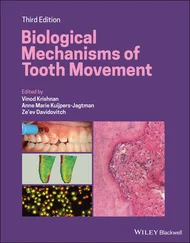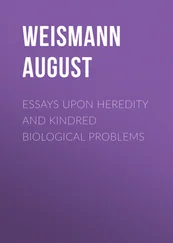Description
Behavioral Expression: Male Botos participate in a wide variety of homosexual interactions, including mating with each other using fully three different types of penetration: one male may insert his erect penis into the genital slit of the other, into his anus, or into his blowhole. When engaging in anal or genital-slit intercourse, one male swims upside down beneath the other one as in heterosexual copulation; blowhole mating occurs with the inserting male above the other one. If there is an age difference between the males, typically the older one penetrates the younger one. Males also rub their genital openings or erect penises against each other; alternatively, one male might rub his head against the other’s genitals, stimulating an erection. Pairs of males who interact sexually also display a great deal of affection toward one another, caressing each other with their beak or flippers, brushing against one another, swimming side by side while touching each other’s body, flippers, or flukes, surfacing to breathe simultaneously, or playing and resting together. Male homosexual encounters can be quite lengthy—continuing for a whole afternoon, for example—although if mating occurs, the actual penetration lasts for only about one minute (in anal intercourse).
Male Botos also engage in homosexual activity with another species of Amazon River dolphin, the Tucuxi ( Sotalia fluviatilis ). In these interspecies encounters, genital slit intercourse between males involves the same belly-to-belly position described above, but sometimes the penetrating animal twists around so that his head faces in the opposite direction (while still remaining inserted in the other male). In addition to caresses and genital rubbing, homosexual activity sometimes includes more unusual behavior: a male Boto was once seen gently taking a Tucuxi’s entire head into his mouth, in an apparently affectionate gesture.
Frequency Homosexual activity is common in captive Botos; its prevalence among wild animals is not known. Similarly, sexual behavior between Botos and Tucuxis has only been seen in captivity, but these two species do occasionally interact with one another in the wild.
Orientation: Because homosexual behavior has been studied in detail only in captive male Botos without access to females, it is not known whether this behavior occurs in other contexts, or if it is simply an expression of a latent or “situational” bisexual potential. However, given the varied and generally plastic nature of dolphin sexuality, it is likely that homosexual or bisexual expression is a basic component of Boto social life for at least some individuals.
Nonreproductive and Alternative Heterosexualities
Male and female Botos sometimes engage in nonreproductive matings: heterosexual blowhole copulations have been observed, and a male will also sometimes rub his penis against the female’s fins or flukes, especially if she does not permit him to copulate vaginally. In addition, heterosexual matings can be remarkably frequent and prolonged affairs: one male and female were seen to mate once every four minutes for a virtually continuous period of over three hours. However, females are not always willing participants in such repeated copulations, often fleeing into shallow waters to avoid males that are harassing them. Females that cannot escape may be attacked and bitten around the genital area by males. Masturbation is also common in Botos: males rub the penis with one of their fins, females sometimes try to insert objects into the genital slit, while both sexes rub their genitals against underwater objects or surfaces. Botos have also developed an alternate parenting or “baby-sitting” arrangement of communal nursery groups. Young Botos gather together in shallow water, forming what are sometimes known as CRÈCHES that contain both calves and older juveniles; these groups offer them safety in numbers while their parents feed on their own.
Two forms of copulation between male Botos: genital-slit (or anal) penetration (above) and blowhole penetration

Two male Botos, a younger and an older individual who are sexually involved with one another, swimming side by side while touching
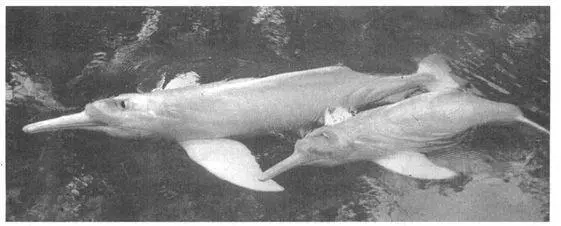
Sources
*asterisked references discuss homosexuality/transgender
*Best, R. C., and V. M. F. da Silva (1989) “Amazon River Dolphin, Boto, Inia geoffrensis (de Blainville, 1817).” In S. H. Ridgway and R. Harrison, eds., Handbook of Marine Mammals , vol. 4: River Dolphins and the Larger Toothed Whales, pp. 1–23. London: Academic Press.
*Caldwell, M. C., D. K. Caldwell, and R. L. Brill (1989) “Inia geoffrensis in Captivity in the United States.” In W. F. Perrin, R. L. Brownell, Jr., Z. Kaiya, and L. Jiankang, eds., Biology and Conservation of the River Dolphins , pp. 35–41. Occasional Papers of the IUCN Species Survival Commission no. 3. Gland, Switzerland: International Union for Conservation of Nature and Natural Resources.
*Caldwell, M. C., D. K. Caldwell, and W. E. Evans (1966) “Sounds and Behavior of Captive Amazon Freshwater Dolphins, Inia geoffrensis.” Los Angeles County Museum Contributions in Science 108:1–24.
Layne, J. N. (1958) “Observations on Freshwater Dolphins in the Upper Amazon.” Journal of Mammology 39:1–22.
*Layne, J. N, and D. K. Caldwell (1964) “Behavior of the Amazon Dolphin, Inia geoffrensis (Blainville), in Captivity.” Zoologica 49:81–108.
*Pilleri, G., M. Gihr, and C. Kraus (1980) “Play Behavior in the Indus and Orinoco Dolphin ( Platanista indi and Inia geoffrensis ).” Investigations on Cetacea 11:57–107.
*Renjun, L., W. Gewalt, B. Neurohr, and A. Winkler (1994) “Comparative Studies on the Behavior of Inia geoffrensis and Lipotes vexillifer in Artificial Environments.” Aquatic Mammals 20:39–45.
*Spotte, S. H. (1967) “Intergeneric Behavior Between Captive Amazon River Dolphins Inia and Sotalia .” Underwater Naturalist 4:9-13.
*Sylvestre, J.-P. (1985) “Some Observations on Behavior of Two Orinoco Dolphins ( Inia geoffrensis humboldtiana [Pilleri and Gihr 1977]), in Captivity, at Duisburg Zoo.” Aquatic Mammals 11:58–65.
Trujillo, F. (1996) “Seeing Fins.” BBC Wildlife 14:22–28.
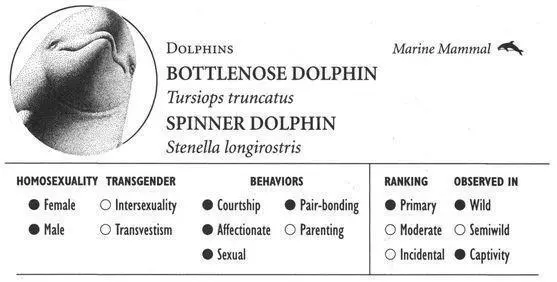
BOTTLENOSE DOLPHIN
IDENTIFICATION: The familiar gray, 10–13-foot-long dolphin. DISTRIBUTION: Worldwide oceans and seas. HABITAT: Coastal, temperate-to-tropical waters. STUDY AREAS: Near Sarasota, Florida; Grand Bahama Island, the Bahamas; Marineland, Florida; Marine World Africa, California; Marineland of the Pacific, California; Port Elizabeth Oceanarium, South Africa; Harderwijk Dolphinarium, the Netherlands; subspecies, T.t. truncatus, the Atlantic Bottlenose; T.t. gilli , the Pacific Bottlenose; and T.t. aduncus, the Indian Ocean Bottlenose.
SPINNER DOLPHIN
IDENTIFICATION: A 6-foot-long dolphin with a long, slender beak; steep, triangular dorsal fin; dark upperparts and light underparts. DISTRIBUTION: Tropical oceans worldwide. HABITAT: Often in deep, offshore waters. STUDY AREAS: Kealake’akua Bay, Hawaii; Sea Life Park Oceanarium, Hawaii; subspecies SJ. longirostris, the Hawaiian Spinner Dolphin.
Читать дальше
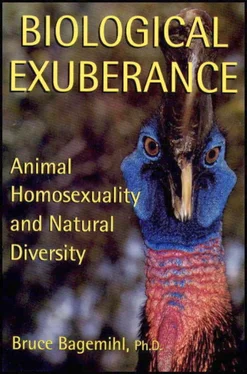
 Two male Botos, a younger and an older individual who are sexually involved with one another, swimming side by side while touching
Two male Botos, a younger and an older individual who are sexually involved with one another, swimming side by side while touching 









